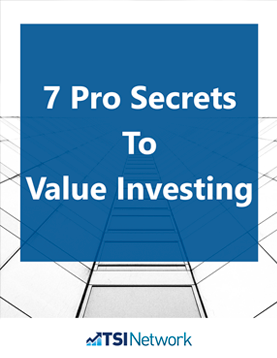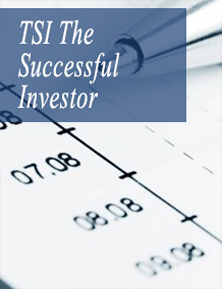Topic: Value Stocks
Your Guide to Income Investing
The best income investments are companies with a long history of cash flow and dividends—and that offer good value
Income investing is an investment strategy that aims to provide current income for investors, even at the expense of some long-term capital appreciation. An emphasis on this investment strategy—as opposed to growth-stock investing, where cash flow is reinvested in a business rather than paying dividends—is often chosen by individuals living off the income from their investment portfolios.
When you pick the best income investments, you are, for the most part, investing in safer and less risky companies. That’s in large part because of the dividends that the best income stocks pay. Dividends, after all, are much more stable than earnings. More important, dividends are impossible to fake—either the company has the cash to pay dividends or it doesn’t.
Learn everything you need to know in 7 Pro Secrets to Value Investing for a FREE special report for you. Canadian Value Stocks:
How to Spot Undervalued Stocks
PLUS! Our Top 4 Value Stocks

The Profits from Hidden Value
Two key guidelines we use for picking the best income investments
- Above-average dividend yields: You can identify income stocks by their high dividend yields (the percentage you get when you divide a company’s current yearly payment by its share price). For example, stocks with a dividend yield higher than, say, 3% would typically be attractive to an income-seeking investor.
However, it’s important to avoid judging a company based solely on its dividend yield. That’s because a high yield can sometimes be a danger sign rather than a bargain. For example, a company’s dividend yield could be high simply because its share price has dropped sharply (because you use a company’s share price to calculate yield). That can be a sign of an imminent dividend cut.
- Maintaining or increasing dividends: Apart from a high dividend yield, you should look for stocks that have a long history of paying (and raising) their dividends. For a true measure of stability, focus on those companies that have maintained or raised their dividends during economic and stock-market downturns.
That’s because these firms leave themselves enough room to handle periods of earnings volatility. By continually rewarding investors, and retaining enough cash to finance their businesses, they provide an attractive mix of safety, income and growth.
4 suggestions on how to tell if a stock will keep paying a dividend
- Look for companies with long-term success. These companies are the most likely to keep paying and increasing their dividends.
- The current financial health of a company. If a company is doing well, has done so consistently, and shows signs of growth, these factors are indicative of stocks that will keep paying a dividend.
- A company’s current dividend. If a company currently offers a healthy dividend, this is a good sign of its potential to continue offering a steady dividend.
- Note the competition. Look for companies with a strong hold on a growing market and a unique product or service that cuts its competition.
|
The hidden risks of prepaid funerals
|
Investor Bonus: Tips for better value investing and ways to select top value stocks
Value investments and growth investing Academic studies suggest that on average, value investing produces better results than growth investing. But these studies mostly look back on what would have happened in a particular historical period, if you followed a particular set of rules. Most distinguish between growth and income investing by looking at average p/e’s (per-share price-to-per-share earnings ratios). They assume high p/e’s are a marker for growth stocks and low p/e’s for value stocks. As any serious value or growth investor can tell you, it’s more complicated than that.
If you balance and diversify your portfolio as we recommend, it should include both growth and value selections. In both areas, you should avoid extremes.
If a stock seems like an exceptional bargain in relation to earnings or asset values, it may suffer from hidden risks. The stock can plunge when those problems begin to take their toll.
Value investments: Look beyond financial indicators When they first set out to formulate a plan, many investors decide to base investment decisions on a handful of measures. For instance, they may want to see a p/e ratio (the ratio of a stock price to its per-share earnings) below 15.0, say, along with an earnings growth rate of 20% or more annually, and perhaps a 2% dividend yield.
This approach worked a lot better in the pre-computer age, when investing was more labour-intensive. Few people wanted to dig through old newspapers, annual reports and other material to get at the data. So more gems were left to be found by those willing to do the work.
In modern times, if you find a stock with this (or any comparable) combination of favourable ratios, it probably comes with some more-or-less hidden drawback not covered by your system. Instead of steering you away from investments that you don’t understand, or that harbour hidden risk, this system will steer you toward them.
3 ratios to use when picking top value stocks
When you look for stocks that are undervalued, it’s best to focus on shares of quality companies that have a consistent history of sales and earnings, as well as a strong hold on a growing clientele.
High-quality value stocks like these are difficult to find, even when the markets are down. But when you know what stocks to look for, you can discover them. We employ three financial ratios as a useful guide to spotting them:
- Price-earnings ratios: The p/e is the ratio of a stock’s market price to its per-share earnings. We start by calculating each p/e ratio using the most recent financial data. But we then go on to analyze the “quality” of the earnings. For instance, we disregard a low p/e ratio if it is due to a one-time capital gain on the sale of assets, since the gain temporarily puffs up the “e”. Similarly, we add back any one-time earnings write-offs, so we don’t miss out on stocks that would have had low p/e ratios if not for one-time write-offs.
- Price-to-book-value ratios: The book value per share of a company is the value that the company’s books place on its assets, less all liabilities, divided by the number of shares outstanding. Book value per share gives you a rough idea of the stock’s asset value. When we find a stock with a low price-to-book value, we look to see if the price is too low, or if its book value per share is inflated. Often, we find that the stock price is too low. But, sometimes, the company’s assets are overpriced on the balance sheet, which means they may be in danger of being written down.
- Price-cash flow ratios: Cash flow is essentially earnings without factoring in non-cash charges such as depreciation, depletion or the write-off of asset values. Cash flow is particularly useful in valuing companies in industries in which depreciation and depletion charges are based on the historical value of assets rather than the current value. Cash flow is actually a better measure of a company’s performance than earnings. While reported earnings are subject to accounting interpretation and can be restated in later years, cash flow is a measure of the cash flowing into a company less cash outlays.
What’s a dividend capture strategy?
Dividend stocks can lead you to better investment returns and tax advantages. But can a dividend capture strategy let you profit even more from dividends?
A “dividend capture” strategy is a trading technique of buying a stock just before the dividend is paid, holding it just long enough to collect the dividend, then selling it. If you can sell it for as much as you paid for it, you have “captured” the dividend at no cost, other than the transaction costs.
To do this, you would buy a stock just before the ex-dividend date, so that you would be a shareholder of record on the record date, and would receive the dividend. Because the stock falls by the amount of the dividend on the ex-dividend date, the strategy then calls for you to wait for the stock to move back to the price where you bought it before the ex-dividend date. At this point, you sell the stock for a break-even trade.
In theory, this can pay off when stock markets are rising. Of course, any strategy that involves buying shares can pay off when stock markets are rising. However, you have to pay a brokerage commission to buy the shares, and a commission to sell. The commissions can eat up much of the dividend income. In fact, they may even exceed the dividend income.
In the end, a dividend-capture strategy may only really have appeal for securities dealers or brokers who are executing huge trades with very low transaction costs. They may also have tax benefits, particularly for corporations. But the average investor has little chance of making a significant profit.
Follow our three-part Successful Investor strategy
- Invest mainly in well-established companies;
- Spread your money out across most if not all of the five main economic sectors (Manufacturing & Industry; Resources & Commodities; the Consumer sector; Finance; Utilities);
- Downplay or avoid stocks in the broker/media limelight.
Do have income investments in your portfolio? How have they performed for you? Share your experience with us in comments.



